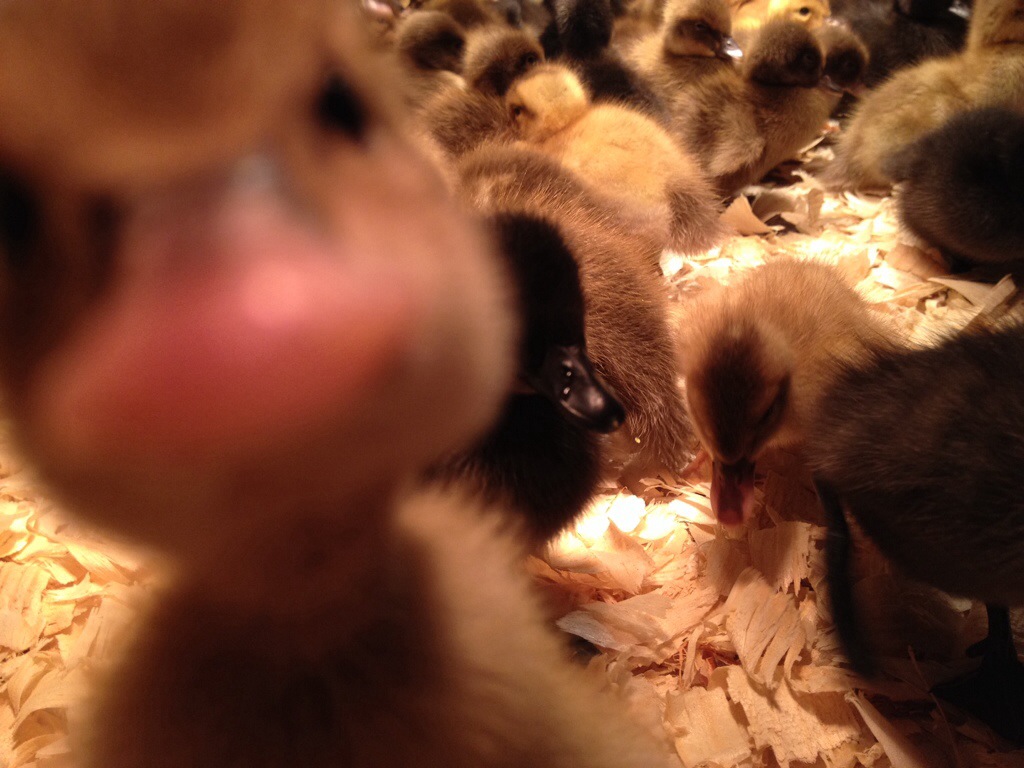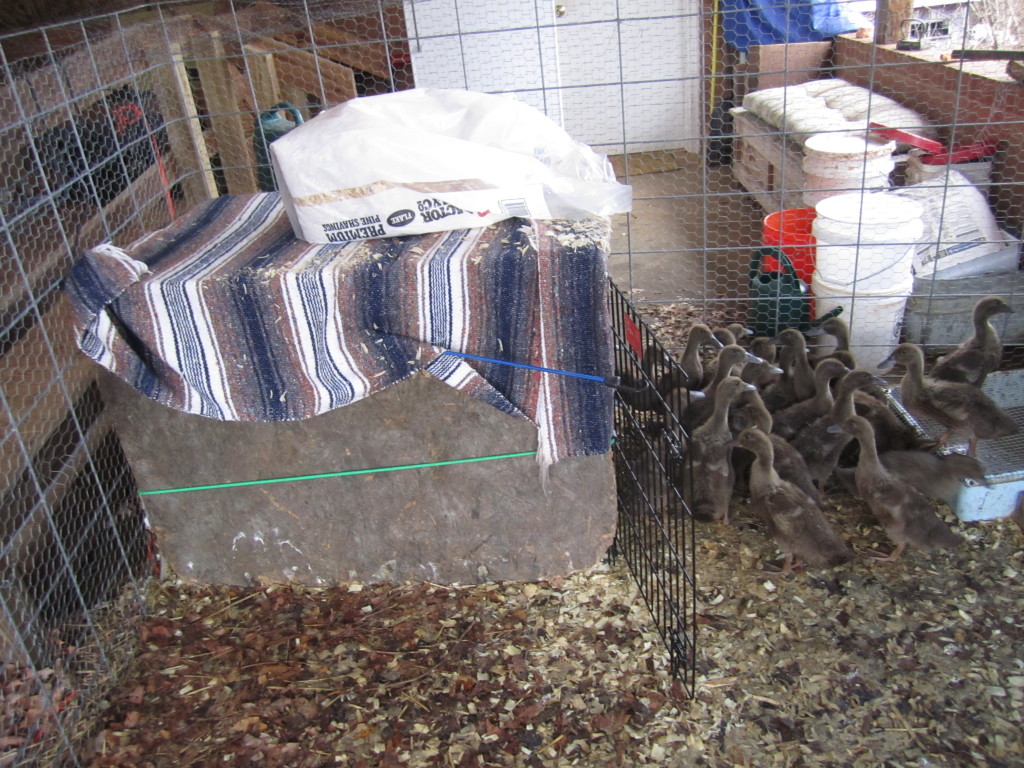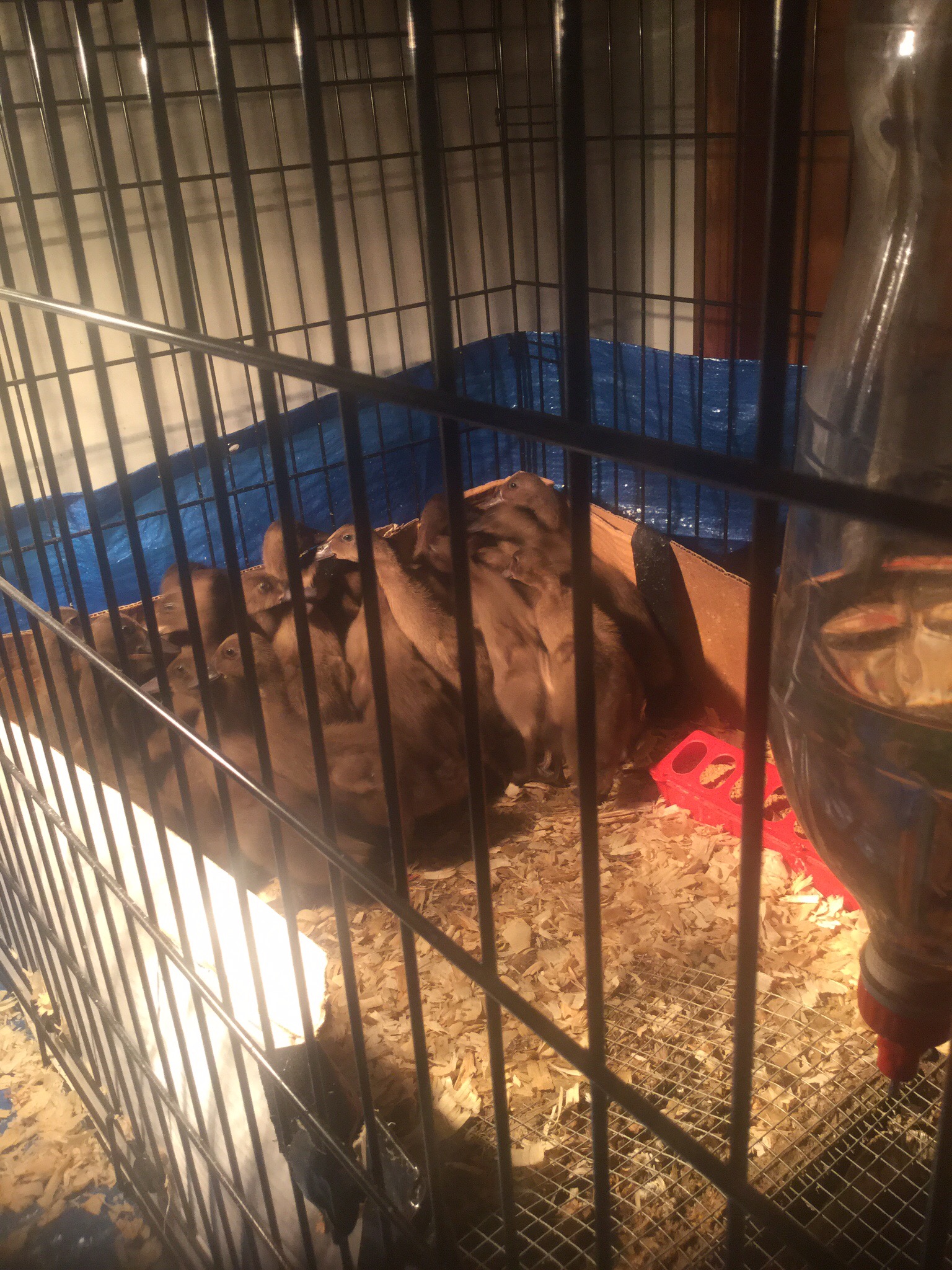Now that you have your day old ducklings in their brooder(seriously, aren’t they cute?)it’s time to feed and water them.
What to feed them?
We feed Non-GMO Starter, a 22% protein mash that provides all the nutrients and energy for fast growing baby ducks. We also like to throw in a chunk of sod from the pasture, to give them some exposure to soil microorganisms, grit, grass and bugs.
How much do they eat?
The rule of thumb for ducklings, and most other baby animals, is to give them free choice access to their feed for the first days/week. After this point, ducks that are being raised to breed, or for egg production, are best off being fed a restricted diet based on age. This helps to control excessive weight gain, which can lead to lower fertility and decreased egg production.
Metzer farms has a great article on the daily feed/water consumption and manure output for ducklings based on age. According to this chart, our 67 ducklings should have eaten .5 lb of feed each over their first week of life, or about 33.5 lbs. total. Judging by whats left in the 50 lb. bag of starter, I don’t think they have eaten quite that much, but they were traveling in a box for 2 days, so that might have skewed the figures.
The chart also shows that each duckling will drink almost 1/2 gallon of water during their first week of life, and up to 2 gallons of water per week as they get older. I think that our duck nipple waterers help them drink more efficiently though.
As for manure output, after 1 week, ducklings deposit almost 1 pound each, and by 7 weeks they are dropping 7 pounds each per week! That’s a lot of fertility! Now, these numbers are “wet” numbers and are mostly water,but still, that’s pretty impressive.
*Tired of feeding chemical genetically modified chicken feed to your flock? Check out our freshly milled, non gmo layer feed!














